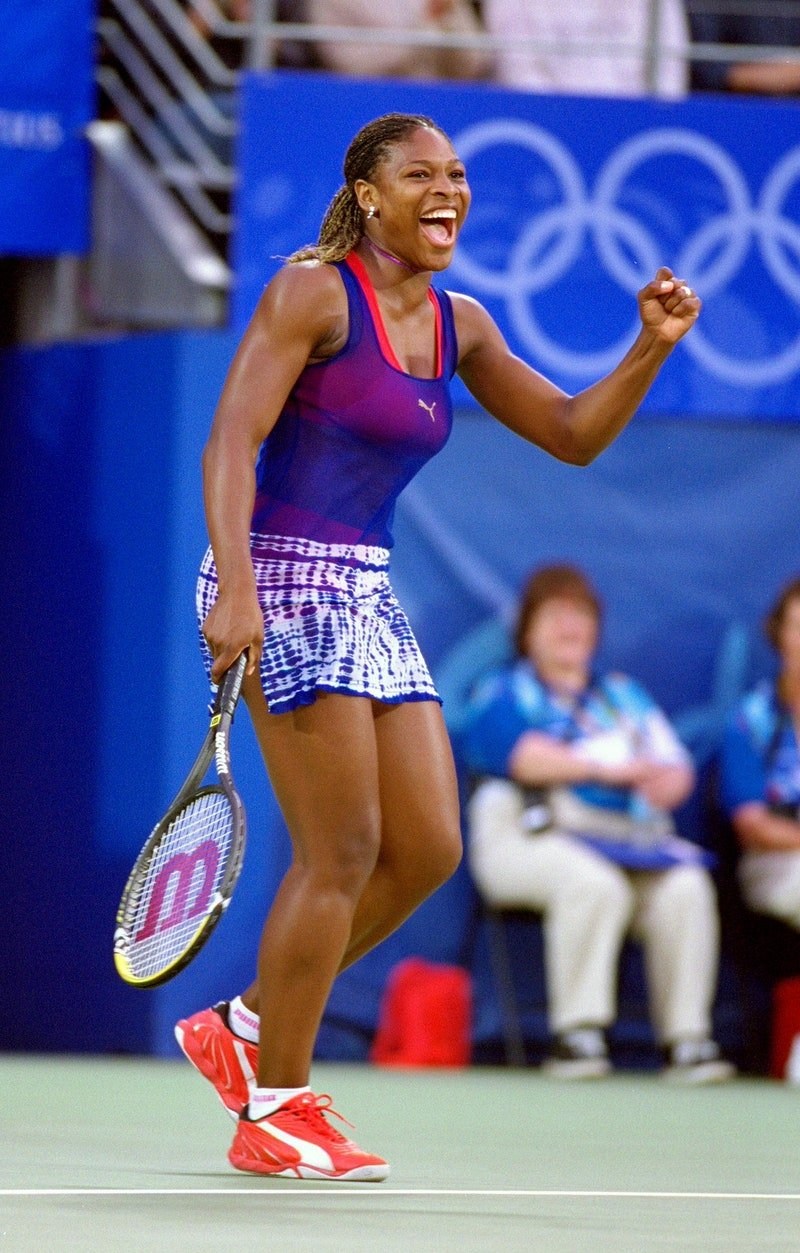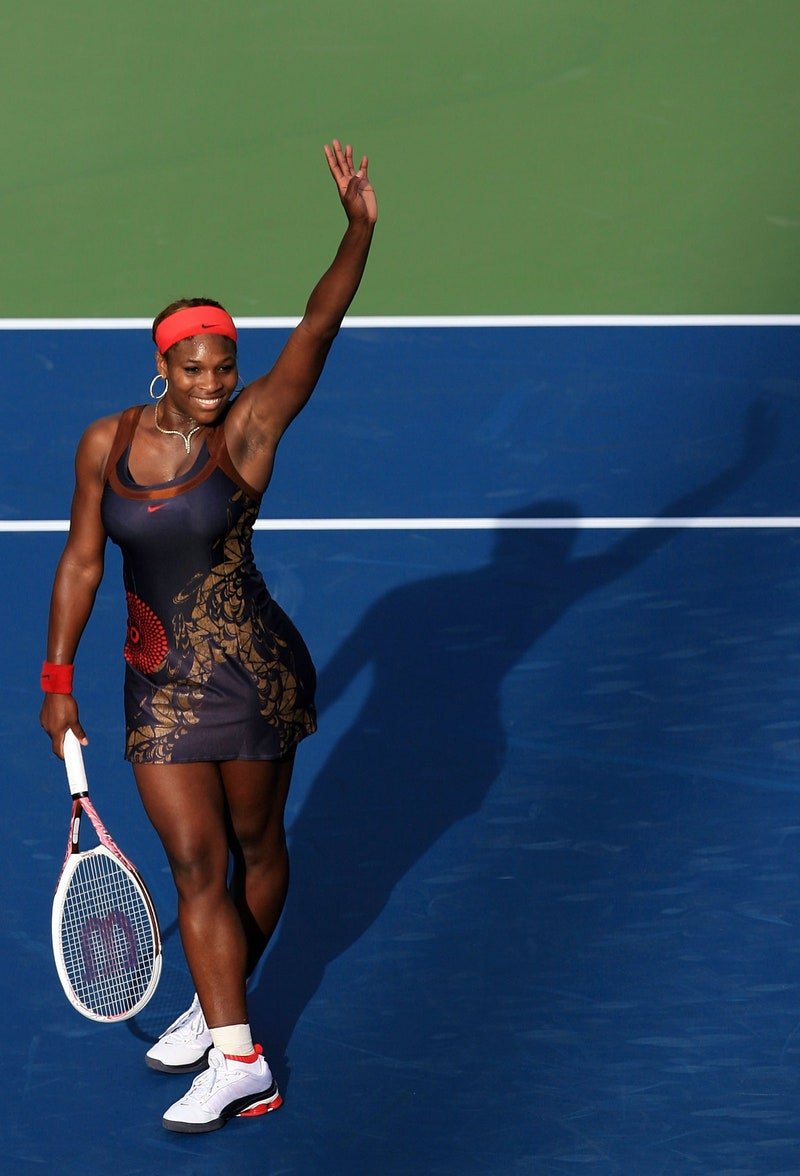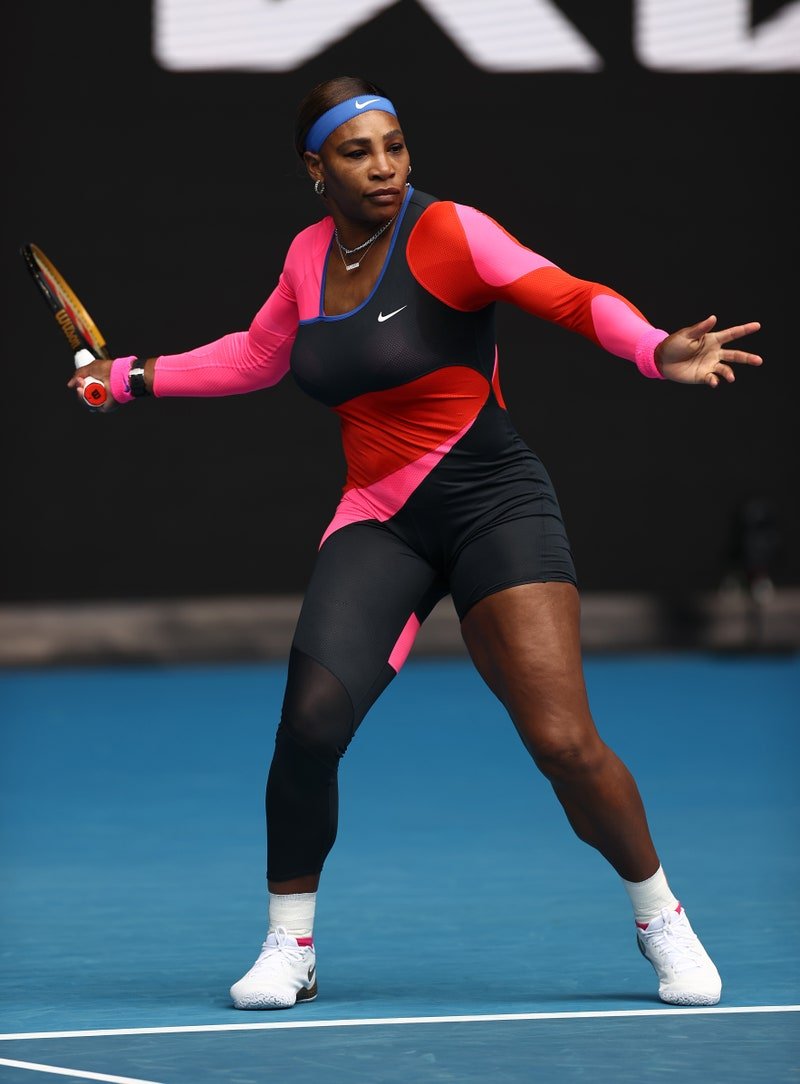Giving Flowers To: Serena Williams
So it’s official - the greatest to ever do it is saying goodbye to tennis next month. Serena Williams last week confirmed that this years US Open will be the last tournament she’s going to play in, as she steps away from the sport. Not because she doesn’t love it anymore, but because theres other parts of her life that can’t evolve until this part reaches its conclusion.
I am a big believer that we should give people their flowers whilst they’re still here to collect them themselves. So before we finish this chapter, I want to look back and celebrate the absolutely extraordinary tennis career of Serena Jameka Williams. Because how lucky we are to have witnessed it.
Serena’s career, along with her sister Venus, began on public tennis courts in Compton, Los Angeles. Coached by her father Richard Williams - who was recently celebrated in the Oscar nominated movie King Richard - Serena starting to practice at only 3 years old. Their natural talent along combined with their drive and their fathers skill as a coach, it wasn’t long before they were on the junior circuit. And they were doing phenomenally well - Serena had a 46–3 record on the USTA junior tour & was ranked No. 1 among under-10 players in Florida. But seeing how other parents treated their children when they lost, Richard - who it is said never berated Serena or Venus if they lost a match - decided to pull the girls out of the juniors. He said “It tears the family to pieces, and we are a great family. And bringing the girls out later, it’ll be better all around for the family, for the girls, for tennis.” Interesting, that it is family that started Serena’s career, and family that has her ready to finish.
Richard Williams practices with his daughter, Serena in 1991 in Compton, CA.
And how right Richard would turn out to be. Because 4 years after the photo on the left was taken, Serena would turn pro in 1995 at the age of only 14 years old. It didn’t take her long to climb the ranks - she didn’t play in the 1996 season, but by the end of the 1998 season, she was the 20th best player in the game.
But No. 20 was never going to be quite high enough for young Serena, so she came back in 1999 and won her first grand slam, the US Open, at 17 years old. And she did it by beating the world number 1 at the time, Martina Hingis, well and truly catapulting her onto the world stage.
By the end of that year, Serena sat at No.4 in the world, and her sister was at No.3, reminding everyone that in 1997 when Venus was asked who her biggest competition for World No.1 was, she said her sister, and she was not joking. Serena followed up her 1999 singles win with a singles or doubles grand slam win every year until 2004, and on July 8th 2002, she became World No.1 for the first time. And though the seasons following this would be rocky, even seeing her drop to No.95 in the 2006 season, 2002 certainly wasn’t the last time we’d see the name Serena Williams next to “World No.1”. Because throughout her career, Serena has been World No.1 for 319 weeks, and 186 of those were consecutive. That’s over 6 years in total, and 3 and a half consecutive years.
And she didn’t do it by halves. In her 27 year professional career, Serena racked up an astounding 23 grand slam singles titles, 14 grand slam doubles titles, 4 olympic gold medals, 11 Wimbledon finals, 1 career grand slam in doubles, and an 84.8% win rate across 1,010 matches. That means in her professional career, Serena Williams has played 1,010 matches, and lost only 154 of them.
In 2003, she won the Australian Open, and in doing so became only the fifth woman in history to hold all four slams at once, having won the French Open, Wimbledon, and the US Open in 2002.
Serena has pushed the boundaries of what was previously thought possible in elite sport. There was a time where 30 was the cut off point, and winning after that age seemed a fever dream. Before Serena, the most grand slams any other female player had won after turning 30 was 3. Serena has won more than 3 times that with 10 of her 23 slams coming after her 30th birthday.
Serena wins her first grand slam, September 11th 1999.
And she’s had fun with it. Don’t get me wrong, watching Serena working her magic on a court is fun. Like, really properly fun. But what was also super fun, was watching her turn the court into a runway. Catsuits, unitards, bodysuits, dresses - Serena made them all her own, and she wasn’t afraid to be just as bold in her fashion on court as she was in her plays. 2004’s cowgirl biker inspired looks come to mind. Along with Venus, she took tennis looks away from the traditional and into the personal. Fashion, expression through clothing and colour, is so much a part of Black culture the world over, and this is another example of - Serena’s own words - her not being afraid to be Black in tennis. Lets do a little gallery moment.
It’s not at all been a smooth ride for Serena though, she’s fought through chronic pain, life threatening illness, and awful racism on her way to the top. Serena has spoken about suffering extreme migraines that hit when she’s on court, and she’s battled them since she was a child. But despite how debilitating they were, she had to learn how to fight through the pain because pain that couldn’t be seen wasn’t understood by her coaches or the media. Back in 2011, she was rushed into hospital in Los Angeles to be treated for a pulmonary embolism - a blood clot in one of the arteries in her lungs. She was quite literally on her deathbed before the surgery to remove it took place in March 2011, but thankfully after a successful surgery and recovery, Serena was ready to be back on a court by June that year, fighting for titles instead of for her life. But this wasn’t the last time blood clots would threaten Serena’s life. In 2017, Serena gave birth to her daughter - after winning the Australian Open that year whilst 2 months pregnant - and shortly after the birth started to feel tightness in her chest and shortness of breath. Serena knew from past experience and because she’d had to come off her anti-coagulant medication that a CT was needed and that she likely had clots on her lungs. She was called crazy by a nurse, who thought her medication was impacting her perception, she then did an ultrasound on her legs to appease her, only to eventually do the CT Serena had requested and found multiple clots on her lungs. Despite this scary, and again life threatening experience, just 9 months later Serena came runner up at Wimbledon 2018, and in September she came runner up in the US open. By February 2019, Serena was back in the top 10, and was still making it to grand slam finals.
Serena has recalled that when she was coming up in tennis, she would be able to track her sister Venus’ matches by the crowd reaction. You might be thinking that’s not unusual - the world loves the Williams sisters, it must have been loud. But what Serena meant was that she knew when her sister had lost a point, because the crowd would cheer, and be near silent when she won. And this became her reality too when she played her matches. Tennis was a sport for the white upper class, both players and audience. Two Black girls from Compton with beads in their hair didn’t exactly fit. And Serena has had to put up with attitudes like this her whole career. Even in 2019, fully solidified as the greatest of all time, she was still being depicted in racist caricature in newspapers. Whilst she and Venus handled this appalling behaviour with grace, they were not afraid to take a stand. In 2001, Venus and Serena were due to meet in the Indian Wells semi final. However Venus had to withdraw due to an injury giving Serena a walkover to the final. The audience made it known they thought this was a fix, Serena was booed loudly during the final, and Venus and their father Richard both recall racist abuse from the crowd. Serena went on to win the tournament and immediately ran over to hug her father. After this the sisters boycotted the tournament, one of the bigger names on tour outside of the slams, for 14 years.
Even though she might be done with tennis, the legacy she leaves on the game will continue. Because of Serena, and of course Venus too, girls like Sloane Stephens, Coco Gauff, Naomi Osaka, Heather Watson, Taylor Townsend, Sachia Vickery and so many more didn’t have to question if there was a place for them in this sport. They knew there was, and it was at the top. And because Serena inspired them, they get to inspire the next generation of little Black girls who might want to pick up a tennis racket. Because of the mark she made on the game, no woman will have to pick between having a baby and maintaining their career - the WTA made a rule change to allow women who take a break from the game due to pregnancy or medical condition to freeze their ranking from before their leave, and then use a special ranking for up to three years. She says goodbye to a sport that finally now pays women the same prize money as men -and how could they not, when the greatest player of all time is a woman?
And this is why I think Serena Williams is the Greatest To Ever Do The Damn Thing. The stats are obvious, they speak for themselves. But to do it in such a hostile environment, to do it against all odds, to do it despite so many set backs, to do it in the face of chronic pain and life threatening illness? And to leave a legacy that large? That takes Serena from Great to truly special. And I know it’s thrown around a lot, especially in sport, but I don’t think we’ll ever see another quite as special again.
Here’s one of my favourite points from Serena, against Sloane Stephens in the Australian Open 2013 Quarter Final. Sloane would go on to win that match but I almost like this point more because of it. Because it backs up what I truly believe: watching Serena Williams lose is still better tennis than watching almost anyone else win.
So, that’s me, giving Serena Williams her flowers, and lord knows she deserves them. Serena, thank you for letting us be witness to your brilliance. Whilst as a tennis fan I am saddened we won’t see your magic on court again, as a fan of Serena Williams if this chapter has to end for others to evolve, I for one can’t wait to see what you do next.


















